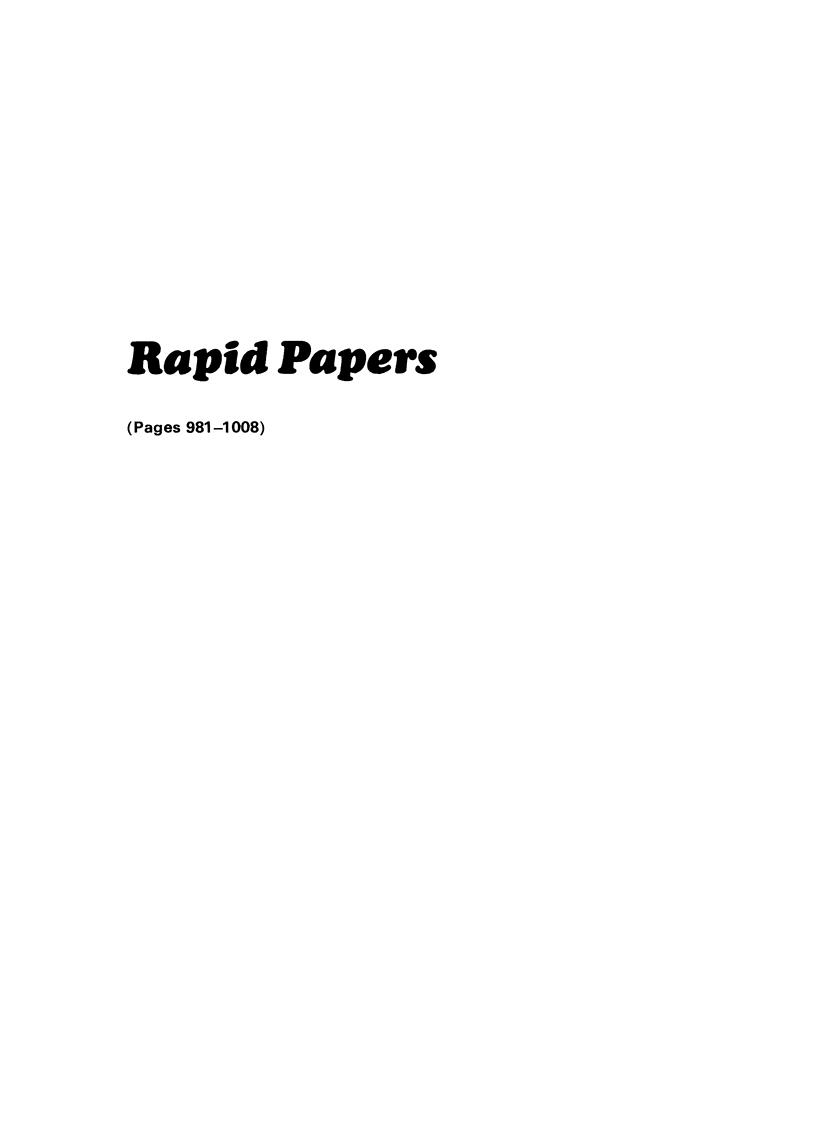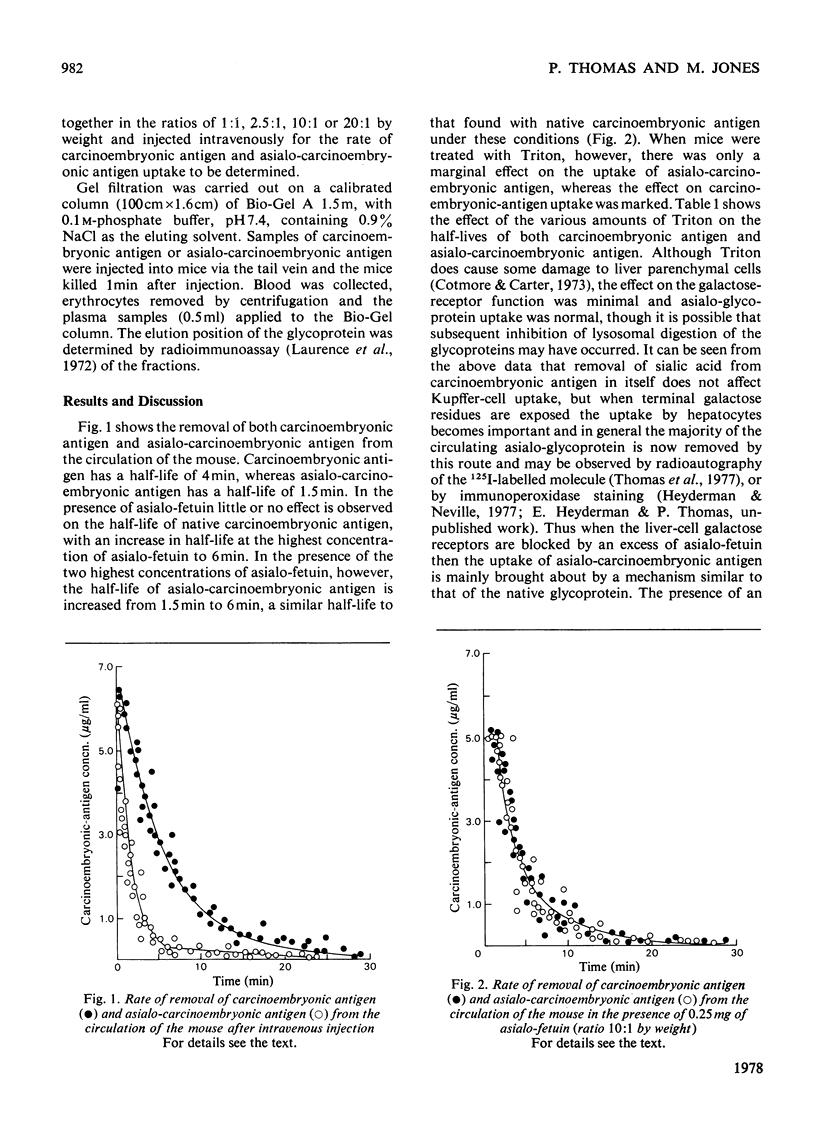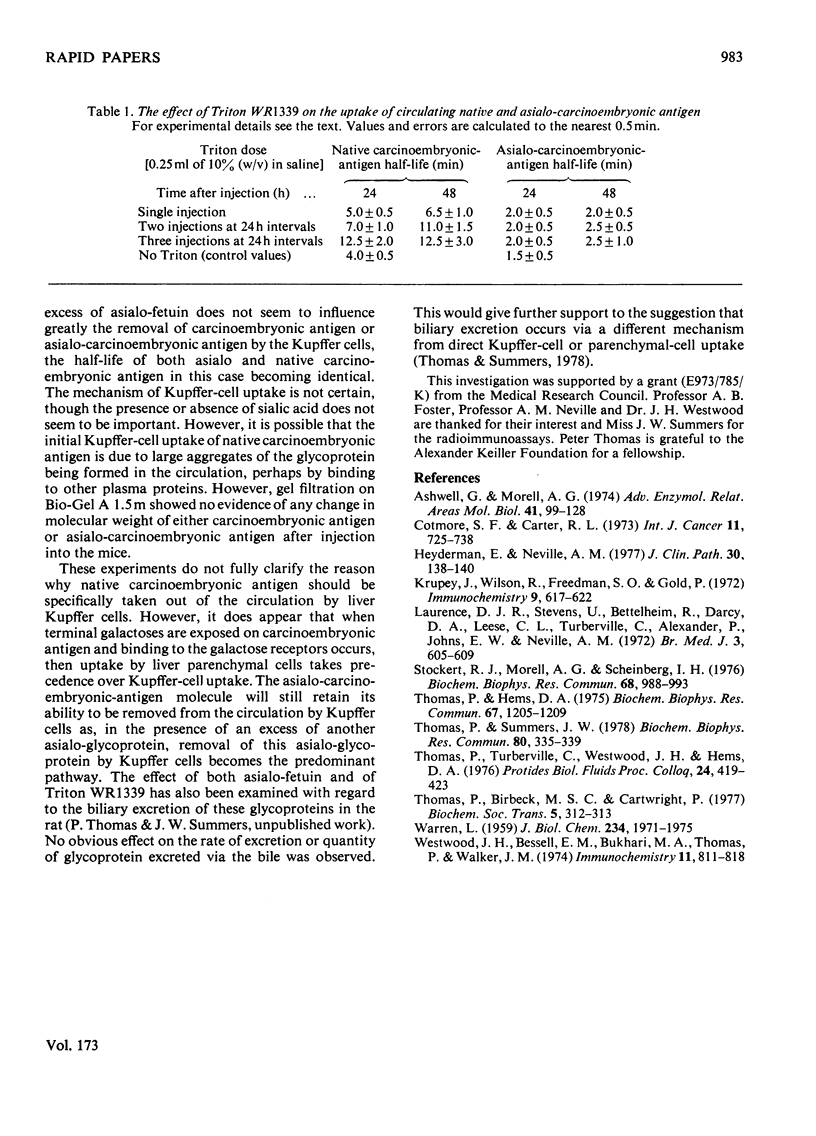Abstract
Uptake of carcinoembryonic antigen from the circulation of the mouse is inhibited by treatment of the animal with Triton WR1339, but not by asialo-fetuin. Uptake of asialo-carcinoembryonic antigen is inhibited by asialo-fetuin, but not by Triton WR1339. These results reflect the different mechanisms of uptake of the glycoproteins. The presence or absence of sialic acid does not seem to be important in governing Kupffer-cell uptake, but when terminal galactoses are exposed on a glycoprotein, uptake by hepatocytes is preferred. Kupffer-cell uptake of carcinoembryonic antigen is not due to the formation of high-molecular-weight complexes in the blood stream. The effect of asialo-fetuin and Triton WR1339 on the biliary excretion of carcinoembryonic antigen and asialo-carcinoembryonic antigen is discussed.
Full text
PDF



Selected References
These references are in PubMed. This may not be the complete list of references from this article.
- Ashwell G., Morell A. G. The role of surface carbohydrates in the hepatic recognition and transport of circulating glycoproteins. Adv Enzymol Relat Areas Mol Biol. 1974;41(0):99–128. doi: 10.1002/9780470122860.ch3. [DOI] [PubMed] [Google Scholar]
- Cotmore S. F., Carter R. L. Mechanisms of enhanced intrahepatic metastasis in surfactant-treated hamsters: an electron microscopy study. Int J Cancer. 1973 May;11(3):725–738. doi: 10.1002/ijc.2910110324. [DOI] [PubMed] [Google Scholar]
- Heyderman E., Neville A. M. A shorter immunoperoxidase technique for the demonstration of carcinoembryonic antigen and other cell products. J Clin Pathol. 1977 Feb;30(2):138–140. doi: 10.1136/jcp.30.2.138. [DOI] [PMC free article] [PubMed] [Google Scholar]
- Krupey J., Wilson T., Freedman S. O., Gold P. The preparation of purified carcinoembryonic antigen of the human digestive system from large quantities of tumor tissue. Immunochemistry. 1972 Jun;9(6):617–622. doi: 10.1016/0019-2791(72)90247-9. [DOI] [PubMed] [Google Scholar]
- Laurence D. J., Stevens U., Bettelheim R., Darcy D., Leese C., Turberville C., Alexander P., Johns E. W., Neville A. M. Role of plasma carcinoembryonic antigen in diagnosis of gastrointestinal, mammary, and bronchial carcinoma. Br Med J. 1972 Sep 9;3(5827):605–609. doi: 10.1136/bmj.3.5827.605. [DOI] [PMC free article] [PubMed] [Google Scholar]
- Stockert R. J., Morell A. G., Scheinberg I. H. The existence of a second route for the transfer of certain glycoproteins from the circulation into the liver. Biochem Biophys Res Commun. 1976 Feb 9;68(3):988–993. doi: 10.1016/0006-291x(76)91243-2. [DOI] [PubMed] [Google Scholar]
- Thomas P., Birbeck M. S., Cartwright P. A radioautographic study of the hepatic uptake of circulating carcinoembryonic antigen by the mouse. Biochem Soc Trans. 1977;5(1):312–313. doi: 10.1042/bst0050312. [DOI] [PubMed] [Google Scholar]
- Thomas P., Hems D. A. The hepatic clearance of circulating native and asialo carcinoembronic antigen by the rat. Biochem Biophys Res Commun. 1975 Dec 1;67(3):1205–1209. doi: 10.1016/0006-291x(75)90801-3. [DOI] [PubMed] [Google Scholar]
- Thomas P., Summers J. W. The biliary excretion of circulating asialoglycoproteins in the rat. Biochem Biophys Res Commun. 1978 Jan 30;80(2):335–339. doi: 10.1016/0006-291x(78)90681-2. [DOI] [PubMed] [Google Scholar]
- WARREN L. The thiobarbituric acid assay of sialic acids. J Biol Chem. 1959 Aug;234(8):1971–1975. [PubMed] [Google Scholar]
- Westwood J. H., Bessell E. M., Bukhari M. A., Thomas P., Walker J. M. Studies on the structure of the carcinoembryonic antigen. I. some deductions on the basis of chemical degradations. Immunochemistry. 1974 Dec;11(12):811–818. doi: 10.1016/0019-2791(74)90302-4. [DOI] [PubMed] [Google Scholar]


